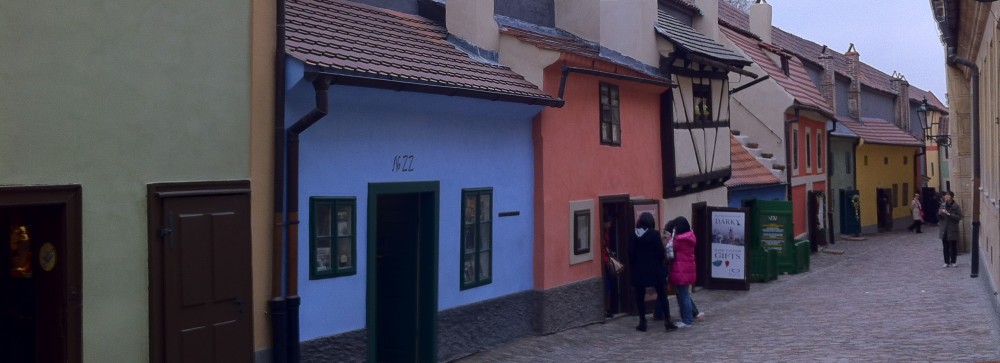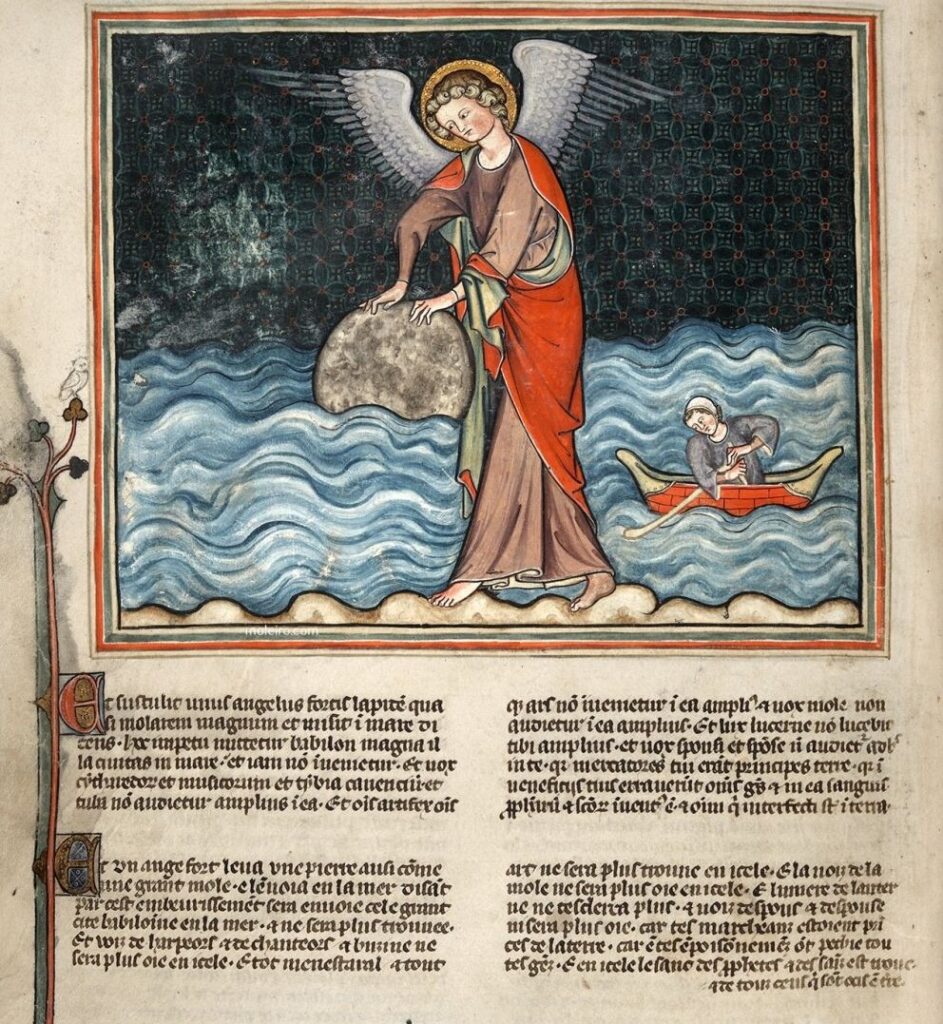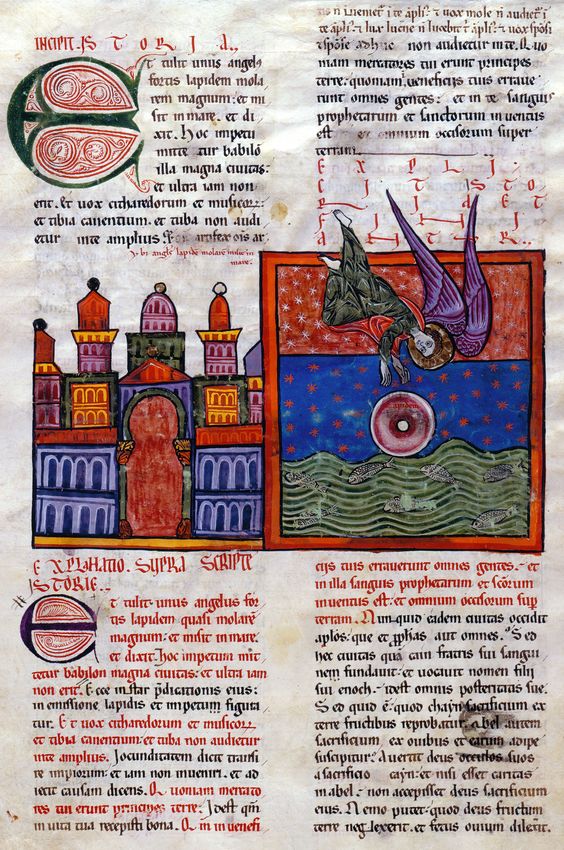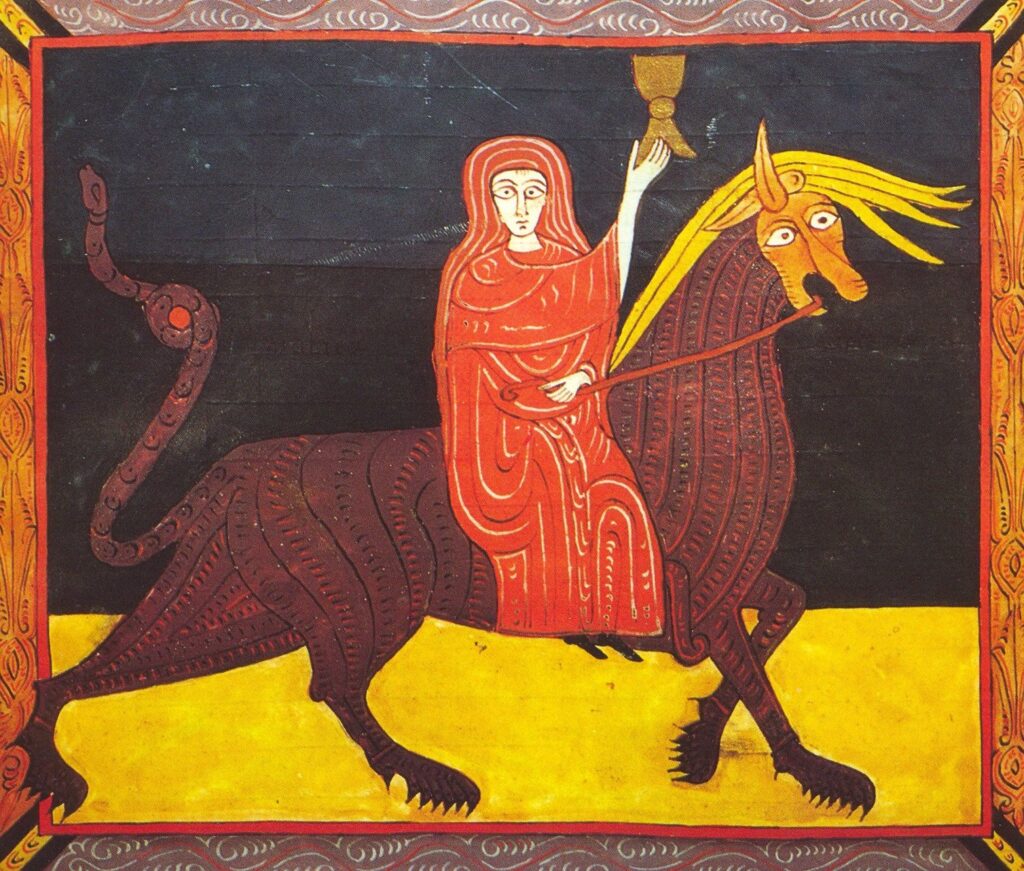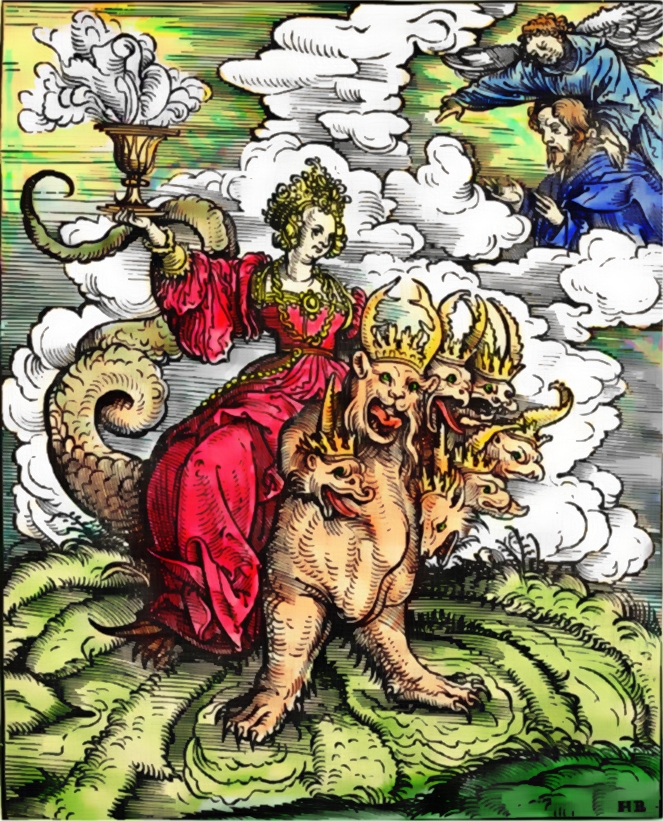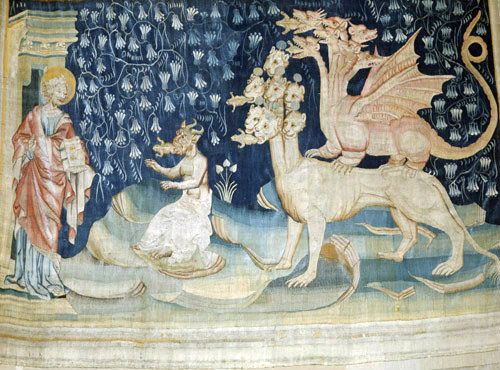“Fallen, fallen is Babylon the great! She has become a dwelling for demons, a haunt for every unclean spirit, a haunt for every unclean and loathsome bird. For all the nations of the world have drunk the wine of her fornication…. ” (Apoc. 18:2)
The whore of Babylon is overthrown and the seer of the Apocalypse sings a series of dirges over the fallen city–both Babylon and Rome, capitals of the fallen world’s opposition to the Kingdom of God. The ruins have become the home of vile and loathsome monsters–some natural, some unnatural–as kings and sailors and merchants and those who grew wealthy from the imperial exploitation of the world mourn their losses.
It is easy–perhaps, too easy–to see the fall of Babylon-Rome as the condemnation of all economic systems that depend on the exploitation of the natural world or the labor of others. Certainly the “mark of the beast” and the refusal to let those who will not worship the Beast to participate in the economic life of society reinforces this interpretation. The Apocalypse seer insists–in many ways throughout the text–that Christians must segregate themselves from the larger society; he does not see how the Church and the fallen world can co-exist or cooperate in any way. He only sees persecution and conflict between the two, much as Augustine describes the “two cities” struggling against each other throughout human history in his classic City of God.
Another way to read the fall of Babylon is to see the city’s destruction as the overthrow of all false teaching, which is at the root of all exploitative systems. It is the misunderstanding of God’s relationship with the world, the human race and our misunderstanding of our relationship with each other that gives rise to all subsequent exploitation.
The fall of Babylon the great is the overthrow of Arius, Nestorius, and all the heresies that the Church has struggled against in the past and will continue to struggle against until the End of Days.
